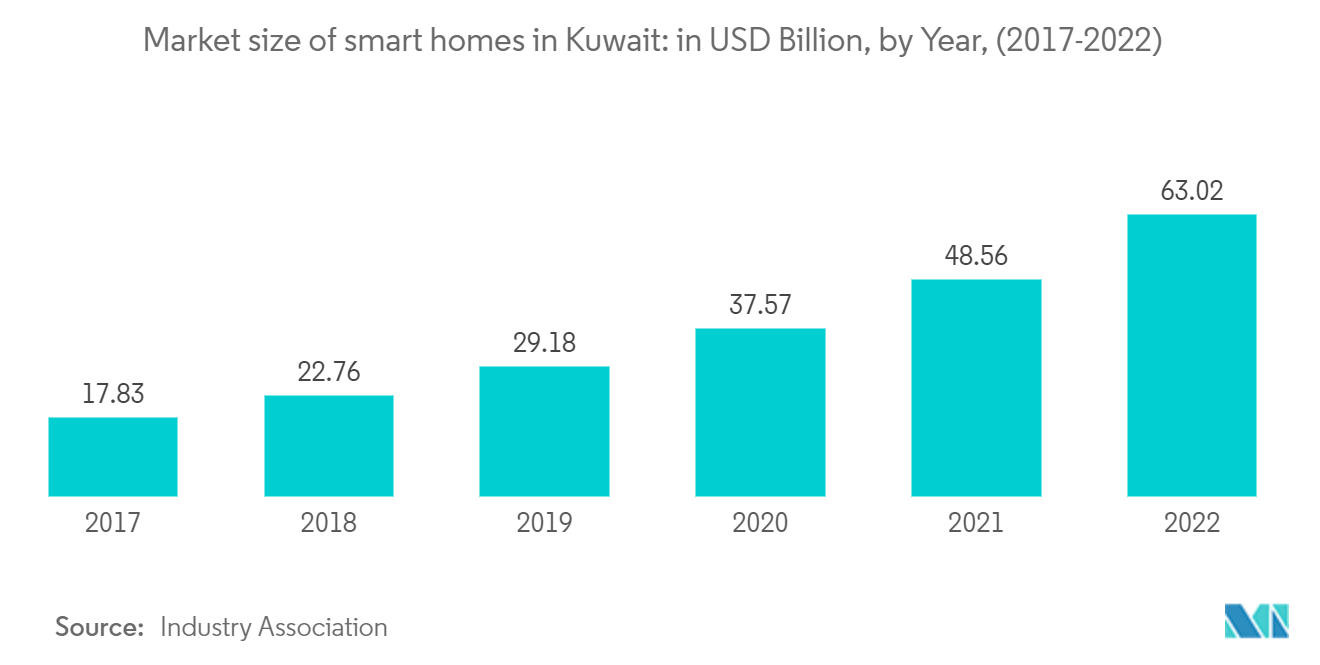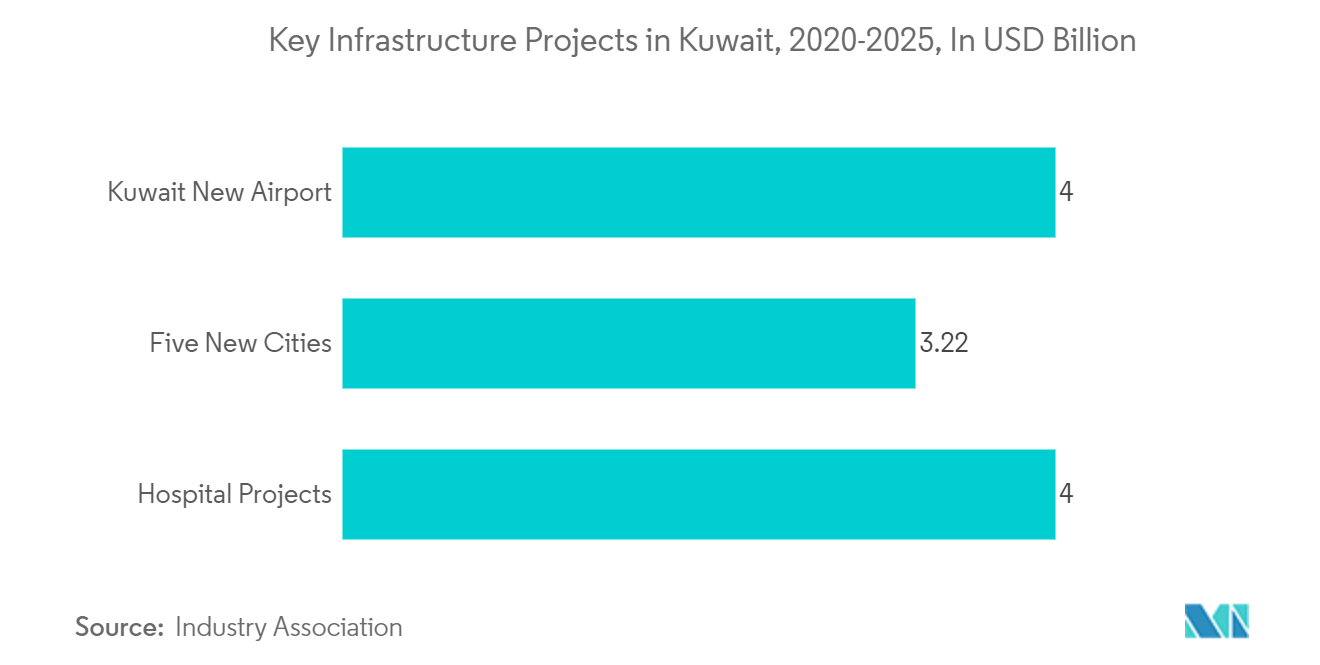Market Trends of Kuwait Construction Industry
Vision 2035 to Drive the Investments in the Construction Sector
The sustainable living environment axis in Kuwait Vision 2035 includes five pillars, the most prominent of which is to provide housing care to citizens through what is planned to ensure the provision of 65.5 thousand housing units through five projects costing about KWD 3.22 billion (USD 10.5 billion), the last of which ends in six years.
When these projects are implemented, the state will have met approximately 72% of the current housing requests, which is 91,000. The first project of the residential care plan revolves around the vision of Kuwait 2035 (New Kuwait) in the city of Jaber Al-Ahmad, which has a completion rate of 95%. The second project is in Al-Mutla’a, with a completion rate of 64%, to be completed by the end of the current year.
The third project is in the suburb of South Abdullah Al-Mubarak, which has a completion rate of 72% and will be completed by the end of 2025. The completion rate in the fourth project, the South Sabah Al-Ahmad, is about 14%, as it is still in the preparation stage and is expected to be completed in six years. This south of Saad Al-Abdullah has a completion rate of 13% as it is still in its preparatory phase and ends in six years.

Investments in Large-scale Projects to Boost the Construction Sector
Kuwait’s infrastructure sector is a leading sector. The country’s development plan (2020-2025) focuses on economic reform and implementation of numerous long-stalled megaprojects, with several large infrastructure projects estimated at USD 124 billion. It includes several infrastructure upgrades such as the USD 7 billion Kuwait City Metro, a rail project that will eventually link all GCC countries, a USD 4 billion new airport, five new planned cities, including Silk City/Northern Economic Zone, further development of the Mubarak Al-Kabeer Port on Boubyan Island, and a large number of mega oil projects, including a new refinery that is still under construction. The government is working on over USD 4 billion worth of hospital projects as part of its plan to boost the bed capacity of hospitals across the country.
Project implementation has seen frequent delays, especially with large infrastructure projects. The government acknowledged that only 10 out of 135 projects included in the 2015-2020 five-year development plan were completed. With 81 projects delayed and four yet to be tendered, those projects were included in the five-year development plan (2020-2025).
Despite challenges like cost overruns and bureaucratic delays, the market is expected to increase, given the vital infrastructure, government, and policy support.


